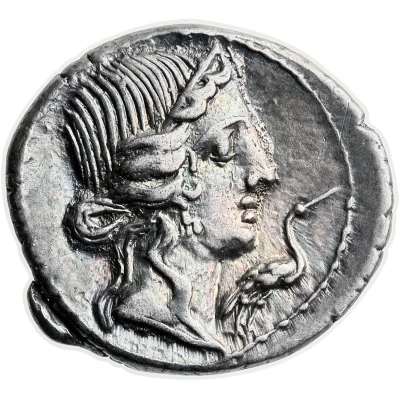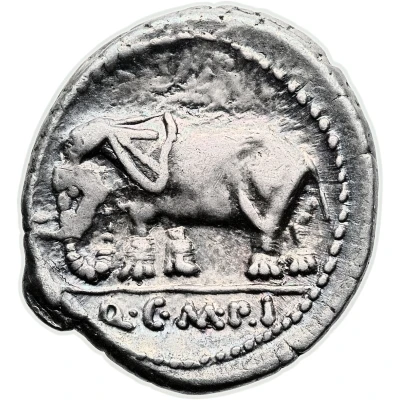


© Heritage Auctions
Denarius Caecilia: Quintus Caecilius Metellus Pius; Q•C•M•P•I 81 BC
81 BC year| Silver (.950) | 3.93 g | 19 mm |
| Issuer | Rome › Roman Republic (509 BC - 27 BC) |
|---|---|
| Period | Republic (509 BC - 27 BC) |
| Type | Standard circulation coin |
| Year | 81 BC |
| Value | Denarius (1) |
| Currency | Denarius of 16 Asses (141 – 27 BC) |
| Composition | Silver (.950) |
| Weight | 3.93 g |
| Diameter | 19 mm |
| Shape | Round (irregular) |
| Technique | Hammered |
| Orientation | Variable alignment ↺ |
| Demonetized | Yes |
| Updated | 2024-10-06 |
| Numista | N#66743 |
|---|---|
| Rarity index | 91% |
Reverse
Elephant left.
Moneyer mark in exergue.
Script: Latin
Lettering: Q•C•M•P•I
Translation: Quintus Caecilius Metellus Pius
Edge
Plain
Comment
The gens Caecilia was a plebeian family at Rome. Members of this gens are mentioned in history as early as the fifth century BC, but the first of the Caecilii who obtained the consulship was Lucius Caecilius Metellus Denter, in 284 BC.Interesting fact
The Denarius coin was used as a means of payment for soldiers during the Roman Republic. In fact, the coin was first introduced during the reign of Julius Caesar, who used it to pay his soldiers during his military campaigns. The coin was made of silver and had a standardized weight and design, which made it easy to use and recognize. The Denarius coin remained in use for centuries and became an important symbol of Roman power and influence.



